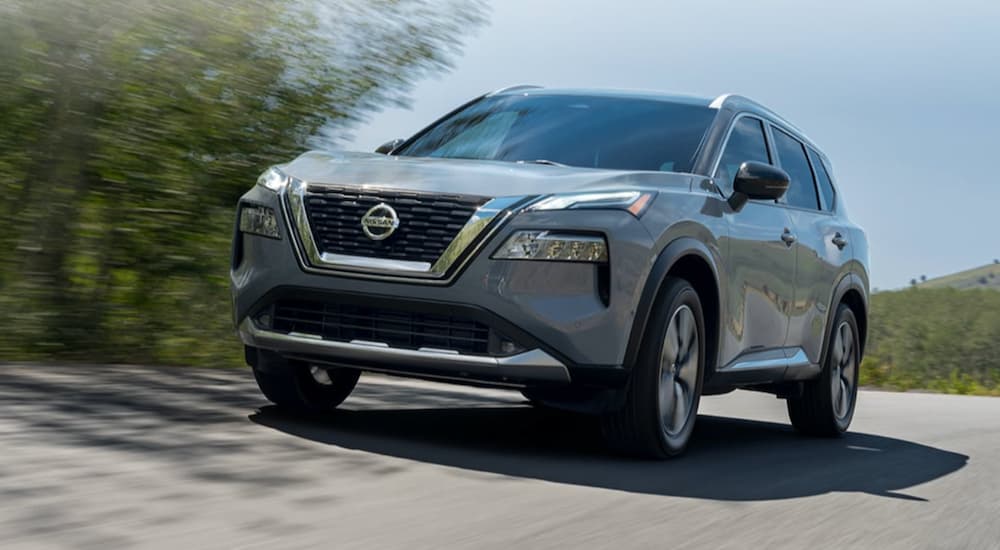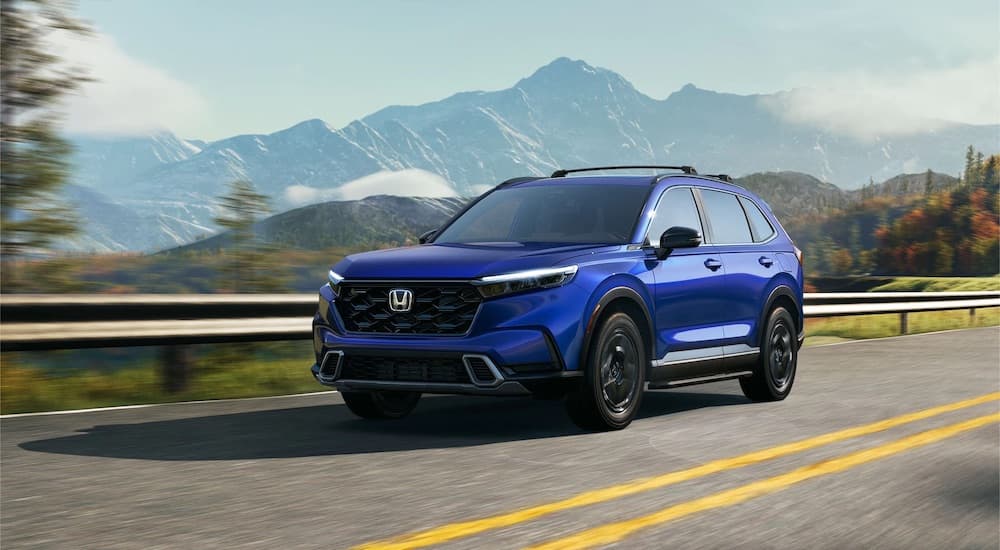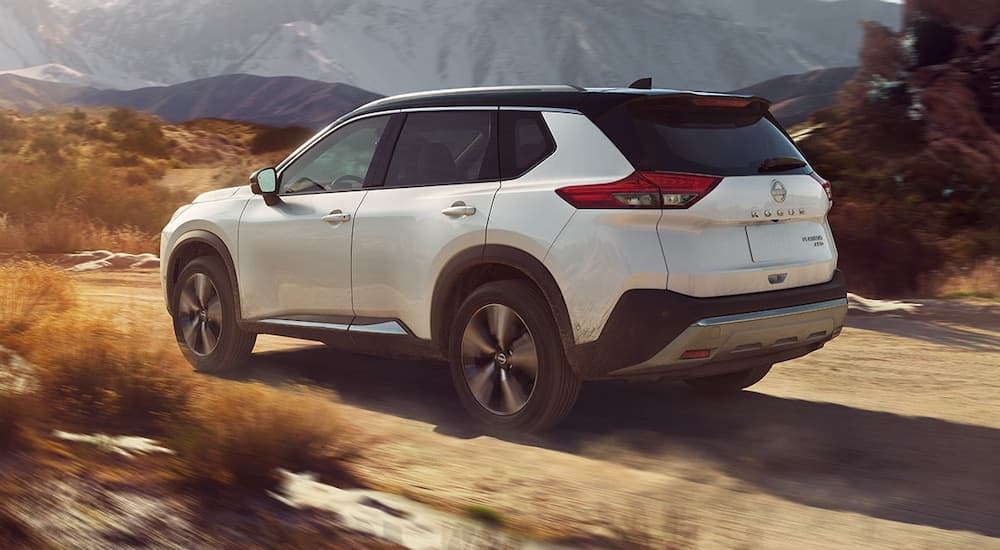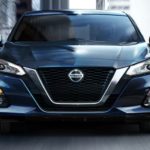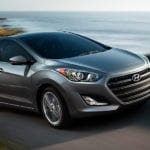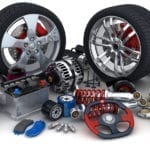Welcome to the TikTok era, where every click, scroll, and swipe sends us spiraling down the never-ending rabbit hole of consumerism, never fully aware of the gravity of our decisions. We’re living in the digital age—an age in which we worship influencers and thirst for their picture-perfect lifestyles. They bombard us with subtle pressures, tout products, and tsk-tsk our mortal existences, all in an attempt to win our hearts, minds, and wallets.
TikTok gurus peddle everything from thousand-dollar blenders to the hottest new SUVs like the 2023 Nissan Rogue vs 2023 Honda CR-V. Puppeteers for companies with deep pockets, these modern-day Svengalis use social media to manipulate us into believing that without “X,” our lives are incomplete. The vehicle industry is a prime player, saturating our feeds with images of their newest crossover traversing Pike’s Peak and making us laugh with catchy slogans. Sure, it’s entertaining, but what happens when buyers care less about image than ending up with a practical SUV at a fair price?
Short of visiting a dealership and conducting your research in person (which isn’t such a bad idea), would-be buyers need a set of go-to resources to silence the noise. Distinguishing the diamonds from the duds requires an intentional effort to cut through the clutter and focus on facts. With the right tools and a few hours, you can look beyond the shiny ads and make a well-informed decision about your next vehicle purchase. Below are a few essential tips to guide you through the maze of hype so you settle on the best choice for your needs, budget, and lifestyle.
The Key Elements of Practicality in the Digital Age
Complicating matters for practical-minded buyers is the spate of high-tech vehicles on the market today. From connected services to infotainment, in-vehicle technology seems “extra” unless it’s vetted against a simple qualifying question: how does this technology benefit me or make my life easier? The good news is many of these systems are designed with driver convenience in mind.
Consider connected services: typically app-based, these services include an array of subscription-based programs that can run upwards of $19.99/month to activate. Features like satellite radio can probably go in the nice-to-have bucket, but a basic Nissan Connected Services subscription offers remote start, vehicle locator, and remote lock/unlock services. If you’ve ever forgotten where you parked in an airport parking garage after flying all day, having an app help you find your car beats wandering acres of concrete on an empty stomach at midnight. Similarly, premium features like connected navigation save time, thanks to real-time traffic updates that notify you when congestion is ahead.
No automotive feature is more practical—or critical—than safety. The latest semi-autonomous driver assistance safety features, like those found on the 2023 Nissan Rogue. Safety Shield 360, Nissan’s safety suite, includes six standard systems that include Lane Departure Warning, which helps drivers stay in their chosen lane; Automatic Emergency Braking with an added Pedestrian Detection feature; and automatic high beams, which switch from low- to high-beam settings automatically, allowing you to focus on the road.
Essential Tips for Evaluating (and Deciding Between) Different Vehicles
If you believe the hype, the 2023 Honda CR-V is the world’s greatest compact SUV. Luckily, most practical buyers skip right over hype and dig through the specs. First, the CR-V’s base model, the LX, costs more than the 2023 Nissan Rogue S, yet the Rogue S includes a standard 8.0-inch infotainment screen, while the CR-V’s is only 7.0 inches. The Rogue S has more horsepower and standard LED headlights and taillights; the CR-V only offers LED bulbs on the headlights.
Though deciding often boils down to personal preference, value-oriented buyers mostly agree that more standard features are better—better for owner satisfaction, convenience, and safety (and better for resale). One great tip for spotting the over-hyped vehicle is to look at the base model. Some automakers intentionally price theirs low as an enticement to up-sell buyers who end up dismayed by the lack of standard features. In the compact SUV segment, look for brands like the Nissan Rogue that opt to include popular equipment on even the least pricey trims.
We have access to almost unlimited information in this digital age, which is a good news-bad news reality. The good news is plenty of content exists for buyers to use when evaluating which vehicle to purchase. Review sites like Car and Driver offer unbiased overviews that prospective buyers can trust. Unfortunately, charlatans also exist, like the TikTok influencer who was paid millions to promote a vehicle to her fans. Does she legitimately believe Vehicle A—the one she’s paid to promote—is better than Vehicle B?
At the end of the day, all the research in the world can’t replace the importance of a test drive. Visit a dealership and take each vehicle on your shortlist for a long test drive, including a few miles on the highway. Ask questions, adjust the seat, play with the infotainment interface, and check out the cargo area. Doing so can reveal any potential red flags that weren’t obvious during your research.
Navigating the Hype: How to Spot Practical Features
Like the old-timey Vaseline lenses that softened leading ladies’ features and made everyone on-camera look like they were teenagers, automakers pay millions to showcase their vehicles in the best possible light. Why shoot a photo in front of the factory when you can plop the latest SUV on a mountain peak or film it driving down Highway 101 with the Pacific Ocean glittering like a thousand stars behind it?
Push through your emotional response and find the facts. In the end, the vehicle you purchase has to meet your day-to-day needs. Not all of us spend our days winding our way through Big Sur. Sometimes we just need a ton of cargo space.
As you consider whether a vehicle meets your needs, visit sites like the National Highway Transportation Safety Administration (NHTSA) and the Insurance Institute for Highway Safety (IIHS) to find your potential vehicle’s current safety ratings. These agencies perform a slew of crash tests to evaluate each car’s capability to keep occupants safe in the event of a collision. Trust their ratings, and with all else being equal, consider choosing the vehicle with the highest ratings.
Speaking of safety, most newer vehicles come with a suite of driver assistance systems that are standard across the trim range. These systems use radar, cameras, and sensors to constantly monitor the areas around your vehicle, alerting you to potential hazards and helping you stay focused. The more standard systems, the better. Less techy features like airbags and tire pressure warning systems are also critical. Dig into the specs and see which vehicle offers the most manual protection—it could save your life.
The Roadmap to Buying a Practical Vehicle
Information is plentiful in the internet era, but wisdom often doesn’t accompany it. Don’t fall into the splash trap and end up with a crossover that falls short of your needs. In the noisy social media-fueled metaverse, choosing a 2023 Nissan Rogue over a 2023 Honda CR-V starts with defining what “practical” means for you. Do you like the Rogue’s low starting price and robust list of standard features, or will you be content with a ute like the CR-V, which might just be resting on its laurels?
You’ll make the best decision when you perform diligent research, make use of trusted online review sites and resources, and consider third-party industry safety ratings. To appreciate a vehicle that’s functional, affordable, and adaptable doesn’t mean you aren’t looking for a little flash; it simply means you’ve smartly chosen function over form and silenced the influencer who tells you it doesn’t matter. Consider this permission to embrace your practical side.
